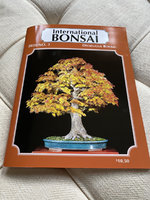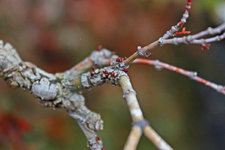Gary McCarthy
Chumono
I love the light and airy feel this tree has. NICE!!!
I love the contrast between that light feel and that rugged bark! This tree is awesome.I love the light and airy feel this tree has. NICE!!!
YEP.........AGREED!!!I love the contrast between that light feel and that rugged bark! This tree is awesome.
Hi Mach. Love the red spring foliage you get on your Arakawa - where do you keep yours? Is it full sun? Or full shade? Mine just comes out a yellow / green shade. (Sorry the picture‘s so rubbish!)
View attachment 297920
Thanks Mach - I guess the genes in mine mean not so much red then. Oh well, never mind.
Be very interested to hear how you get on propagating this one; what are your plans? Air layers? Cuttings? Grafts?
Love this tree and I understand the reasons you are going to cut it back I was just wondering how hard you will be cutting it back though will it be all the way back to the secondary branches or even harder to the primarysThanks guys! Despite then fact that it has come a long way, this year I plan to cut back a bit more drastically than I have done in the past. I want to bring the overall silhouette a bit tighter. But, more importantly, as this arakawa has aged and began to mature, it is also starting to shed some of the twigs and small branches closer to the trunks. This is consistent with Andrea Meriggioli's account in his book of maples. It seems that arakawa in particular, as it ages and branches get covered in their rough bark, has a tendency of shedding its branches closer to their trunk in favor of the ones more distally located. I want to try and encourage more back budding wherever I can and seems safe in favor of its design which for a while may not look as appealing. The plan is to leave the tree alone until June when all leaves have matured and then cut it back.
I am also planning to air layer a section of one of its back branches to have grafting stock for future use.
Love this tree and I understand the reasons you are going to cut it back I was just wondering how hard you will be cutting it back though will it be all the way back to the secondary branches or even harder to the primarys
Yeah will be interesting to see how you handle it.Thanks Rob. I have to be careful because once the branches get the rough bark it will be very difficult to get back budding. So it looks like it will be just to the secondary branching. I am not sure yet. I have to study it and see where I can cut back. Apex is another issue as I also want to bring it tighter but you can weaken it easily if you are not careful. So I will need to proceed somewhat methodically around the entire tree.







Thanks Conor!Hey Mach,
Congrats on the article
With those kind of buds popping along the branch, as you show, how do you deal with the buds? Do you rub ones out you do not need, before they leaf out, or allow all to grow then prune after?
If a tree is in a not-strong state, I feel like letting them leaf out would generate more energy and health for the tree, or this really of no consequence in the grand scheme?
I don't have this cultivar, so the advice may not be applicable to mine (Beni-Maiko, Beni-Chidori and Kotohime) but I think the question may relate to all.
Thanks!
Thanks Conor!
The tree has provided a wealth of options for next year. In this case I plan on leaving most of the buds intact. And yes, that may also include those the are facing down. I'll remove only the ones I know I cannot use such as the ones that popped in the crotches. At this point I want to leave myself as many options as possible. In June, I will assess and then start to make more conscious decisions as to what I will cut back to or leave to develop further. This would apply to other cultivars as well.
In a tree that's weak, leave your buds to develop freely without cutting back until you see the tree regain its vigor. You could still make some selections before they pop like rubbing off those in the crotches.
